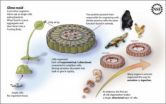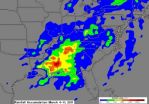(Press-News.org) In the early stages of human embryogenesis, a transcription factor called Twist1 plays a key regulatory role in how the embryo assumes form and function. Much later in life, however, researchers at the University of California, San Diego School of Medicine, say Twist1 can re-emerge, taking a darker and more deadly turn.
In a paper published in the March 15, 2011 issue of Cancer Cell, UCSD scientists led by Jing Yang, PhD, assistant professor of pharmacology and pediatrics, identify a unique function of Twist1 in later life: it promotes the formation of invadopodia in tumor cells, a vital step in the spread of such cells (metastasis) to surrounding tissues and other parts of the body.
Invadopodia (meaning "invasive feet") are tiny protrusions of tumor cells that extend into the extracellular matrix -- the surrounding connective tissue and fibers that provide support. Invadopodia concentrate enzymes that degrade the matrix so that tumor cells can break away and metastasize.
Previous studies have linked the expression of Twist1 to many aggressive, solid-tumor cancers, including melanomas, neuroblastomas, as well as breast and prostate cancer. The new research by Yang and colleagues describes in detail how Twist1 initiates the multi-step pathway resulting in invadopodia formation and matrix degradation. The research also reveals places in the process that may present potential targets for future anti-metastasis therapies.
After embryogenesis, Twist1 is normally suppressed. Cancer cells, however, reactivate the transcription factor, enabling Twist1 to initiate its complex pathway leading to metastasis. Drug designers, however, have yet to successfully devise a way to directly inhibit transcription factors like Twist1. The UCSD study points to other possibilities.
"We hope to inhibit downstream targets of Twist1 (such as platelet-derived growth factor receptors) to inhibit invadopodia formation and function," Yang said. "Our study suggests that inhibition of invadopodia-mediated matrix degradation could be an effective way to suppress metastasis."
If that happens, a cancer tumor becomes a stable, unmoving and easier target for other types of therapeutic treatments.
###
Co-authors of the paper include Mark A. Eckert and Andrew T. Chang, UCSD Molecular Pathology Graduate Program and Biomedical Science Graduate Program; Thinzar M. Lwin and Etienne Danis, UCSD Department of Pharmacology; and Jihoon Kim and Lucila Ohno-Machado, UCSD Division of Biomedical Informatics.
Research funding came, in part, from the National Institutes of Health, the Sydney Kimmel Foundation for Cancer Research, the California Breast Cancer Research Program and the Susan G. Komen Foundation.
Tumor metastasis with a twist
Protein is key to early embryonic development, but later promotes spread of cancer
2011-03-15
ELSE PRESS RELEASES FROM THIS DATE:
Painkiller prescribing varies dramatically among family physicians: study
2011-03-15
TORONTO, Ont., March 14, 2011 -- Some physicians are prescribing opioids such as OxyContin 55 times as often as others, according to a new study led by St. Michael's Hospital and the Institute for Clinical Evaluative Sciences (ICES). The study found most opioid-related deaths occur among patients treated by physicians who frequently prescribe opioids, suggesting doctors who prescribe a lot of opioids may not be doing so safely.
"We found that the 20 per cent of family doctors who are frequent prescribers wrote 55 times as many prescriptions as the 20 per cent of family ...
Study shows why people read magazines featuring envy-inspiring models
2011-03-15
COLUMBUS, Ohio – New research reveals why people read fitness and fashion magazines featuring photos of impossibly thin or muscular models -- models whose appearance highlight the readers' own flaws.
Many previous studies have found that people who are unhappy with their physical appearance feel even more dissatisfied when they are shown photos of models who have "ideal" bodies.
"So you have to wonder: why do we still buy those magazines and watch those television programs when they should just make us more dissatisfied?" said Silvia Knobloch-Westerwick, associate professor ...
Toxoplasmosis: The strain explains severity of infection
2011-03-15
Providing clues into why the severity of a common parasitic infection can vary greatly from person to person, a new Johns Hopkins study shows that each one of three strains of the cat-borne parasite Toxoplasma gondii sets off a unique reaction in the nerve cells it invades.
Past research suggests that the parasite, estimated to infect 25 percent of people worldwide, can trigger or exacerbate psychotic symptoms and schizophrenia in genetically predisposed people.
The findings of the new study, published in the March issue of the journal Infection and Immunity, help explain ...
New research focuses on prion diseases
2011-03-15
New research by Chongsuk Ryou, researcher at the UK Sanders-Brown Center on Aging and professor of microbiology, immunology and molecular genetics in the UK College of Medicine, may shed light on possible treatments for prion diseases.
Prion diseases, which include Creutzfeldt-Jakob disease in humans and bovine spongiform encephalopathy ("mad cow" disease) in cattle, are caused by prions — unconventional pathogens composed of infectious protein particles and resistant to conventional sterilization procedures. Presently there is no known agent or procedure that can halt ...
Teens and young adults with cancer face unique challenges and require targeted care
2011-03-15
New Rochelle, NY, March 14, 2011–Adolescents and young adults are neither children nor adults and those affected by cancer require targeted care that crosses the boundaries between pediatric and adult oncology, according to several pioneers in this still-developing field of adolescent and young adult oncology. An illuminating roundtable discussion by these experts will be published in the premier issue of Journal of Adolescent and Young Adult Oncology, a multidisciplinary peer-reviewed publication of Mary Ann Liebert, Inc. (www.liebertpub.com). The Roundtable has been published ...
How the slime mold gets organized
2011-03-15
The so-called cellular slime mold, a unicellular organism that may transition into a multicellular organism under stress, has just been found to have a tissue structure that was previously thought to exist only in more sophisticated animals. What's more, two proteins that are needed by the slime mold to form this structure are similar to those that perform the same function in more sophistical animals.
Shortly after an animal embryo forms, it develops a single layer of cells that, shaped like a hollow ball, is empty at its center. Acting as a kind of "man behind the curtain" ...
Combining 2 peptide inhibitors might block tumor growth
2011-03-15
COLUMBUS, Ohio – A new study suggests that combining two experimental anticancer peptide agents might simultaneously block formation of new tumor blood vessels while also inhibiting the growth of tumor cells.
This early test of the two agents in a breast cancer model suggests that the double hit can stifle tumor progression, avoid drug resistance and cause few side effects, say researchers at the Ohio State University Comprehensive Cancer Center – Arthur G. James Cancer Hospital and Richard J. Solove Research Institute (OSUCCC – James) who developed the agents and evaluated ...
New high-resolution carbon mapping techniques provide more accurate results
2011-03-15
HILO, Hawaii—A team of scientists from the Carnegie Institution for Science's Department of Global Ecology and the USDA Forest Service's Pacific Southwest Research Station (PSW) has developed new, more accurate methods for mapping carbon in Hawaii's forests. Their research appears in an online issue of the journal Frontiers in Ecology and the Environment.
The growing market for private and public entities to purchase carbon offsets has led to a need to find better monitoring techniques to accurately quantify the amount of carbon (C) held in our nation's forests. Combining ...
NASA's Hubble rules out 1 alternative to dark energy
2011-03-15
Astronomers using NASA's Hubble Space Telescope have ruled out an alternate theory on the nature of dark energy after recalculating the expansion rate of the universe to unprecedented accuracy.
The universe appears to be expanding at an increasing rate. Some believe that is because the universe is filled with a dark energy that works in the opposite way of gravity. One alternative to that hypothesis is that an enormous bubble of relatively empty space eight billion light-years across surrounds our galactic neighborhood. If we lived near the center of this void, observations ...
TRMM maps flooding along US East Coast from massive storm
2011-03-15
The massive rain storm that stretched from New York to Florida last week dropped some record rainfall and NASA's Tropical Rainfall Measuring Mission (TRMM) satellite measured that rainfall from space. Those rainfall totals were assembled in a "rain map" created at NASA's Goddard Space Flight Center in Greenbelt, Md.
Although the heaviest rainfall last week was in the southern United States, flooding was reported in states from Louisiana to northern New York. A rainfall analysis was created made by merging precipitation data from multiple satellites. This Multisatellite ...
LAST 30 PRESS RELEASES:
Superradiant spins show teamwork at the quantum scale
Cleveland Clinic Research links tumor bacteria to immunotherapy resistance in head and neck cancer
First Editorial of 2026: Resisting AI slop
Joint ground- and space-based observations reveal Saturn-mass rogue planet
Inheritable genetic variant offers protection against blood cancer risk and progression
Pigs settled Pacific islands alongside early human voyagers
A Coral reef’s daily pulse reshapes microbes in surrounding waters
EAST Tokamak experiments exceed plasma density limit, offering new approach to fusion ignition
Groundbreaking discovery reveals Africa’s oldest cremation pyre and complex ritual practices
First breathing ‘lung-on-chip’ developed using genetically identical cells
How people moved pigs across the Pacific
Interaction of climate change and human activity and its impact on plant diversity in Qinghai-Tibet plateau
From addressing uncertainty to national strategy: an interpretation of Professor Lim Siong Guan’s views
Clinical trials on AI language model use in digestive healthcare
Scientists improve robotic visual–inertial trajectory localization accuracy using cross-modal interaction and selection techniques
Correlation between cancer cachexia and immune-related adverse events in HCC
Human adipose tissue: a new source for functional organoids
Metro lines double as freight highways during off-peak hours, Beijing study shows
Biomedical functions and applications of nanomaterials in tumor diagnosis and treatment: perspectives from ophthalmic oncology
3D imaging unveils how passivation improves perovskite solar cell performance
Enriching framework Al sites in 8-membered rings of Cu-SSZ-39 zeolite to enhance low-temperature ammonia selective catalytic reduction performance
AI-powered RNA drug development: a new frontier in therapeutics
Decoupling the HOR enhancement on PtRu: Dynamically matching interfacial water to reaction coordinates
Sulfur isn’t poisonous when it synergistically acts with phosphine in olefins hydroformylation
URI researchers uncover molecular mechanisms behind speciation in corals
Chitin based carbon aerogel offers a cleaner way to store thermal energy
Tracing hidden sources of nitrate pollution in rapidly changing rural urban landscapes
Viruses on plastic pollution may quietly accelerate the spread of antibiotic resistance
Three UH Rainbow Babies & Children’s faculty elected to prestigious American Pediatric Society
Tunnel resilience models unveiled to aid post-earthquake recovery
[Press-News.org] Tumor metastasis with a twistProtein is key to early embryonic development, but later promotes spread of cancer



